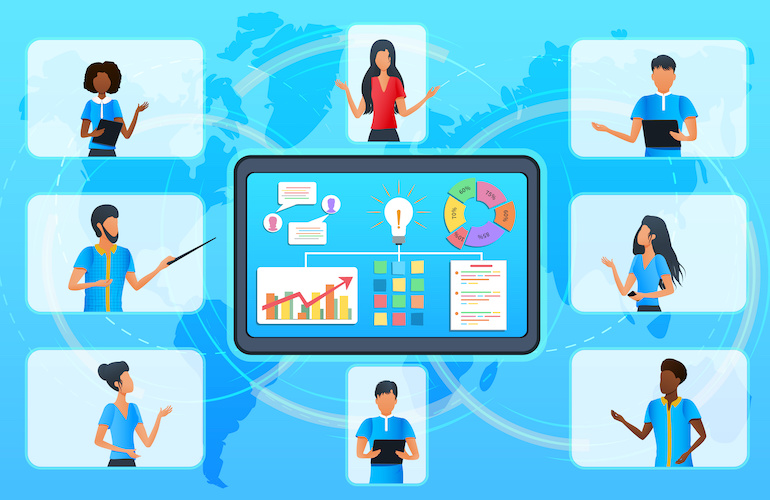The “new normal” is something we’ve all had to get used to as a result of the global pandemic. All aspects of our daily lives have been affected in ways we couldn’t have imagined. And the workplace is no exception, particularly when it comes to learning and development. In many industries and businesses, the traditional face-to-face methodology was shut down almost overnight, with the spotlight suddenly shifting to technology and the world of virtual learning.
Change tends to bring a mixture of brilliant opportunities and worrying realities. In times of crisis, there are those who get creative — and those who resolutely stick with what they know. In the case of digital learning, the creative teams started to try their hand at user-generated video and gamification. Both offered the potential of increased compliance rates for mandatory training and exciting alternatives to break away from the “knowledge download” approach of the classroom. The traditional teams, however, took their classroom slides, added a little extra narrative and a few “next” buttons, and called it e-learning.
Digital training can be whatever you want it to be — a 30-second behavioral nudge, an interactive video or a full e-learning package with introspective pause moments. But it shouldn’t just be about downloading knowledge — people need to experience it to get the real benefits.
Screen fatigue is real — living through a glowing rectangle all day, every day in our new virtual workplaces is tough, so three-hour intensive training courses are not necessarily going to be successful. Get smart and cut through the noise without adding to an already long day by using techniques such as microlearning modules and performance nudges.
If you are seeking to train out a process change, for example, don’t spend hours agonizing over a 40-minute e-learning piece — instead, keep it simple. Short microcapsules of three to four minutes showcasing the “need to knows” will make navigation manageable, repeatable and actionable — and keep costs down. By creating a library of user-generated content, your production costs can be low but your saturation high. Engage your early adopters out there in the business to help invigorate others.
This “keep it simple” approach also works for behavioral training. Don’t tell people how to behave with an hour-long lecture — just provide short, sharp nudges as needed. Many of us have good intentions to invest in inclusive behaviors — but the reality is that we get consumed by our ever-growing task list and, before we know it, it’s the end of the day and we have missed the opportunity to “connect.” Do we need to train people to have human conversations? Of course not — we all just need a nudge in the right direction. We are all used to notifications on our phones and apps, so translate this approach to employees’ workday prompts or WhatsApp groups.
Although cost savings are easily achievable with a switch from classroom to computer, digital should not just be the option when money is tight — even though venue hire, travel costs and time away from the day job are all reduced or eradicated by digital learning. This year is going to be tough for many organizations, and, during times of financial difficulty, L&D budgets are traditionally among the first to be cut. However, right now the world is changing so fast that the reduction in budget simply cannot be matched with a reduction in development offerings. So, we need to get smarter.
But being smarter with the budget isn’t just about watching dollars and cents and focusing on the return on investment. It’s also about challenging the return on expectation — and that expectation continues to be that learning will stick and behaviors will change.
Live virtual training provides learners the opportunity to engage with team dialogue rather than content monologue. Breakout groups and polled activities are common features in a well-designed live virtual session, but don’t limit participants’ voices to preordained answers — use that connected time to get social. It’s all about flipping the learning experience. Don’t tell them what they could have found out themselves; engage individuals to truly question each other and socialize a topic among themselves, in their own narratives.
One of the positive things that came from 2020 is that we have all involved ourselves more in personal development. People are taking ownership of what they want. It means employers have to provide more opportunity and think about that extra value — what’s going to make a difference to employees and give an ROI in terms of expectation? When you offer something digital that speaks to the topic you want to cover — but you add something that someone can take away for themselves — you get a higher uptake of people viewing what you want them to see.
A lot of middle-ranking managers in organizations, for example, are turned off by diversity and inclusion training because they believe they will be overlooked for their next promotion in favor of traditionally underrepresented candidates. The way to bring them on board is to offer them something that clicks for them, helping them unlock something within themselves, as well as begin to unravel the “mysteries” of those they work alongside. If you get that balance right, there is a lot to gain.















